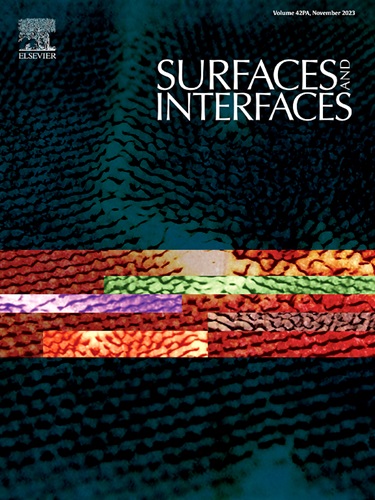等离子体对聚合物薄膜的表面改性和图案化以及蛋白质的吸附行为
IF 5.7
2区 材料科学
Q2 CHEMISTRY, PHYSICAL
引用次数: 0
摘要
研究了通过直流等离子体辉光放电改性疏水性聚苯乙烯(PS)和亲水性聚乙二醇(PEG)薄膜的表面润湿性能。聚合物薄膜在暴露于空气、氮气、氧气或氩气等离子体时,表面润湿性发生了变化。在聚苯乙烯薄膜中,可以观察到亲水性表面迅速发生改性,随后按照一阶动力学稳定恢复。通过调整等离子环境和参数以及使用离子溶液进行额外的湿化学处理,可以调节改性和恢复的速度。在 PEG 薄膜中,疏水润湿性会随着老化按照一阶动力学发生变化,并且在暴露于空气环境中长期保持稳定。此外,还可以利用 PEG 薄膜作为源,在其他表面沉积具有疏水润湿性的自组装分子层,从而实现类似气相沉积的工艺。利用表面改性或分子沉积工艺,可以在 PS 和 PEG 薄膜表面形成润湿性图案,也可以通过 PEG 薄膜的气相传输在其他表面形成润湿性图案,还可以形成梯度润湿性图案。此外,还研究了免疫特异性蛋白质系统在表面改性亲水 PS 薄膜上的吸附行为。本文章由计算机程序翻译,如有差异,请以英文原文为准。
Surface modification and patterning of polymer thin films by plasma and adsorption behavior of proteins
The surface wettability property of hydrophobic polystyrene (PS) and hydrophilic polyethylene glycol (PEG) thin films subjected to modification by direct current plasma glow discharge is studied. The polymer films exhibited change of surface wettability on exposure to air, nitrogen, oxygen or argon plasmas. In PS films a swift modification to hydrophilic surface and subsequent steady recovery following first order kinetics are observed. The rate of modification and recovery are adjustable by adjusting the plasma ambient and parameters, and additional wet-chemical treatment using ionic solutions. In PEG films the hydrophobic wettability evolve with ageing following the first order kinetics, and is stable for long period on exposure to air ambient. Moreover, a vapor deposition like process is possible using the PEG films as source to deposit self-assembled molecular layers with hydrophobic wettability on other surfaces. Using surface modification or molecular deposition processes, the fabrication of wettability patterns in the surface of PS and PEG films, and on other surfaces by vapor transport using PEG films, and also the possibility to produce gradient wettability patterns are demonstrated. Moreover, the adsorption behavior of immuno-specific system of proteins on surface modified hydrophilic PS films is studied.
求助全文
通过发布文献求助,成功后即可免费获取论文全文。
去求助
来源期刊

Surfaces and Interfaces
Chemistry-General Chemistry
CiteScore
8.50
自引率
6.50%
发文量
753
审稿时长
35 days
期刊介绍:
The aim of the journal is to provide a respectful outlet for ''sound science'' papers in all research areas on surfaces and interfaces. We define sound science papers as papers that describe new and well-executed research, but that do not necessarily provide brand new insights or are merely a description of research results.
Surfaces and Interfaces publishes research papers in all fields of surface science which may not always find the right home on first submission to our Elsevier sister journals (Applied Surface, Surface and Coatings Technology, Thin Solid Films)
 求助内容:
求助内容: 应助结果提醒方式:
应助结果提醒方式:


